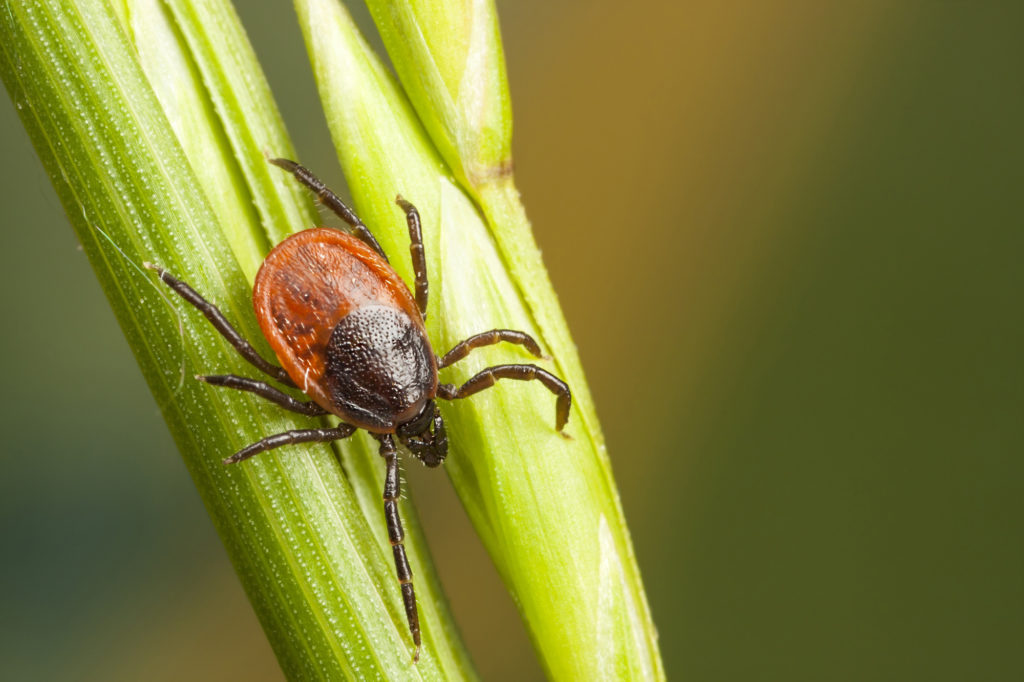
When it comes to bugs and creepy crawlers, no insect is feared, hated, and misunderstood more than the tick. These blood-sucking bad bodies come in nearly 900 different species, some of which are responsible for terrible illnesses and diseases for people and pets alike.
Curious to learn more about these creepy critters and how tick anatomy works? In this article, we’re covering everything you need to know about these creepy critters and best practices on what to do if and when you run into one.
Tick Anatomy
At first thought, you’d probably think a tick is related to a flea or a mosquito because of how it sucks blood. But ticks are actually arachnids, although you shouldn’t confuse them with spiders.
As larvae, ticks have six legs, but that number grows to eight when they reach adulthood. These legs, which have spikes and claws, allows them to move from one surface to another quickly and quietly latch onto an unsuspecting host. They’re roughly the size of a pencil eraser until they feed, and their flat bodies make it easy for them to move about undetected.
How Do They Feed?
When a tick feeds, they pierce their host’s skin and insert a tube known as a hypostome to hook onto the host. They also secrete a saliva, which keeps the host’s blood from clotting, and contains a numbing agent that makes the host less likely to discover them.
An interesting (and creepy) fact about ticks is that only female ticks suck blood and feed on hosts. Females feed on the blood so they can mate and lay eggs, and they often pass infections that they pick up from their hosts. Male ticks, on the other hand, will attach to a host, but will not feed, so they won’t transmit any diseases.
How Do You Get a Tick?
As mentioned above, ticks usually wait for a person or animal to pass by and then sneak onto them. You’re most likely to get a tick if you venture into a wooded area that has tall weeds or grasses as they climb on the grass and wait for passersby there. They’re most active from April through July, although they can still be found in the winter as well.
What to Do If You Get One
If you travel somewhere you think has ticks, you should immediately inspect yourself when you get home. Check your clothes for small spots, and remove and wash your clothes to kill any ticks that may be on them. Most likely, the tick will try to crawl to an area like your armpits, groin, or head.
If you find a tick on your body, you need to make sure you remove the ticks entire body. Find a pair of tweezers and gently grab at the head of the tick, and slowly pull it off of your flesh. Try to pull the tick straight without twisting or jerking it to avoid leaving any parts of the tick attached to you.
From there, clean the bite area with soap and water. If you’re nervous you’re at risk for something like Lyme disease, schedule an appointment with your doctor to discuss your tick bite.
What About Pets?
Unfortunately, animals are just at as much risk as humans for ticks, especially dogs. And what’s worse is that you’re a lot less likely to notice a tick on them than you are yourself. The good thing is that there are many dog flea and tick products you can use to both prevent and treat tick issues.
Products like flea and tick collars as well as pesticides can help kill any ticks that come in contact with your dog. But while these products are effective, nothing is 100% effective, so you should always inspect your pets for any ticks every time they come back in after being outside.
Final Thoughts on Ticks
Ticks may be gross, but it’s important to know about tick anatomy and how they operate so you can deal with them. By reviewing the information and tips in this article, you can avoid ticks (or quickly handle a bite) should anything come up!
Did you enjoy the content of this article? Want more interesting insights? Read our blog to learn about business, movies, music, and more!

